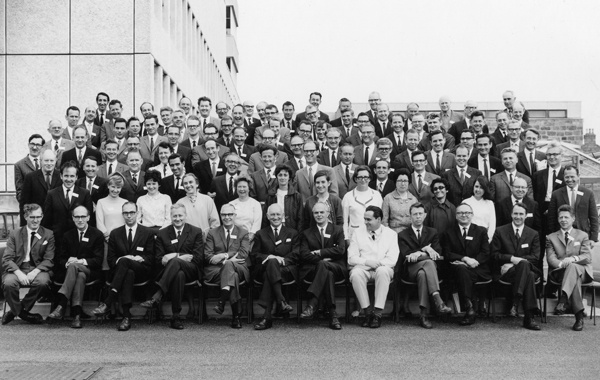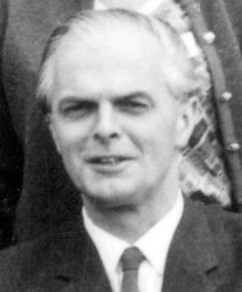
- Preface to TEMA 1 proceedings (1970)
-
The study of trace element metabolism and function and the nature of disorders arising from trace element deficiency and excess in man and other animals is a field of scientific endeavour which cuts right across the conventionally accepted boundaries of biochemistry, physiology, nutrition and human and veterinary medicine.
At the early meetings, during which the ideas for this Symposium first took shape, it was agreed that one of the most important factors responsible for the slow application of knowledge of the importance of the trace elements in the nutrition of domesticated animals and man was the inadequacy of existing opportunities to discuss recent research findings and to consider the limitations of existing knowledge. It was agreed that steps should be taken to promote an interdisciplinary meeting at which the opportunity would be provided for discussion of these topics.
It rapidly became apparent that this proposal to hold a Symposium on Trace Element Metabolism in Animals had generated widespread interest and it became obvious that the objectives of the meeting would best be served by making it truly international in character. In recognition of this international character the cosponsors of the Symposium thus became the International Biological Programme and the World Association for Animal Production.
The meeting had two main objectives; firstly, to provide a forum in which recent progress in studies of the metabolism and functional roles of the trace elements could be discussed, and secondly, to provide the opportunity for an interchange of ideas between workers investigating these fundamental aspects of the biological function of the trace elements and those whose task it is to apply their findings in the fields of nutrition and human or veterinary medicine. These aims were chosen because of the belief of the organizers that from a meeting of this nature could come a concentration of effort on those problems which today so often prevent us from clearly recognizing the existence of disorders arising from trace element deficiency or excess and prevent us from making a clear quantitative assessment of the requirements of animals for many of the trace elements.
This International Symposium was held in Aberdeen in July 1969. The proceedings of this conference, including the discussions following many of the scientific contributions, have been edited and are collected in this volume. Most of the 154 invited participants were active workers in the field under review and as a result the Symposium was vigorous and the discussions concise. Due to circumstances beyond the Organizing Committee’s control it is regrettable that coverage of recent work on chromium and cobalt is incomplete but, with these exceptions, this volume presents a picture of the state of existing knowledge and emphasizes points of growth and conflict in the study of trace element metabolism and utilization.
To assist rapid publication the proofs of papers and records of the discussions were not generally circulated to participants for correction and the General Editor therefore accepts full responsibility for any errors or omissions.
The preparation of this volume would have been a much more difficult task without the help of Drs. I. Bremner, J. Quarterman and J.K. Chesters who acted as assistant editors and without the advice of Mr. R.B. Williams who acted as Symposium treasurer. We are indebted to Mr. W. Morton for his meticulous work in preparing tape recordings of all discussions, to Miss E.S. Davidson and Mrs. J. Webster who bore the immense task of transcribing the proceedings and to Mr. T.D. Bell who prepared the index.
Finally we are pleased to acknowledge the help of the staff of the School of Agriculture, University of Aberdeen who acted as hosts for the meeting and to thank the staff of Messrs E. and S. Livingstone for their help and encouragement during the preparation of this volume for publication. To Beryl and Caroline I would like to add a personal apology for those occasions during the past two years when I have been found thinking abstractedly of Symposium affairs at times when my thoughts should have been elsewhere.
To a wife and to a daughter I express sincere thanks for the patience and encouragement which did so much to make my own participation in this meeting so enjoyable.
C.F. Mills Aberdeen, 1970 General Editor
- Message from Colin Mills to TEMA delegates in 1996
-

Those of you who remember Eric will be able to appreciate the violent explosions of indignation that greeted this news of our insular attitudes. Eric’s encouragement spurred us on to establish a truly international meeting that, through the years, has gone on from strength to strength with a blend of scientific excellence and informality that has been the basis for many working friendships.
The spirit of the TEMA meetings has survived many organisational problems. It has survived financial difficulties in developing our meetings, it must have been one of the truly international meetings in a country now tragically torn apart by ethnic divisions (in the course of which the records of TEMAP7 miraculously escaped destruction by fire) and it was one of the first truly international scientific gatherings in a reunited Germany.
Through the years the TEMA meetings have become noted for an informality that encourages free exchange of criticism in a field of work somewhat noted for its controversy. It is for this reason that many of us place so much value on the recorded discussions of our meetings that effectively monitor the scientific standards of its contributions without engendering the injured isolation that sometimes follows such exposure to differing ideas.
This free exchange of data and ideas has contributed very substantially to a much wider understanding of the significant roles of cobalt, copper, iodine, zinc, selenium and chromium deficiencies in the health and productivity of farm animals.
Although we have realised for many years that deficits of iron and iodine were of pre-eminent importance for human well-being, it has taken recent failures in humanitarian relief policies to awaken a much wider practical interest in the importance of the essential trace elements for human health. While this has posed many diagnostic problems for which we still lack solutions, the frequency with which the micronutrient deficiencies are invoked to explain failures in humanitarian relief programmes is its own testimony to the urgent need for studies in this field.
That TEMA is playing its part is fully evident from the list of consultants acknowledged in the recent World Health Organisation Publication Trace Elements in Human Nutrition and Health."
- Memoirs of Eric Underwood
-
Biographical Memoirs of Eric John Underwood.
This memoir was originally published in Historical Records of Australian Science, vol.13, no.3, 2001.
